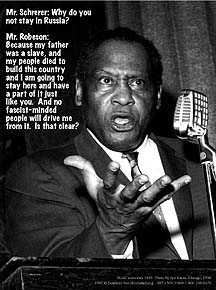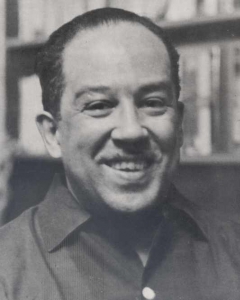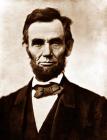12月10日
10回目でした。その日のうちに書いたつもりが、前日になりました。水曜日から金曜日まで東京に行ってたせいか、ずいぶんと日にちが経ったような気がするなあ。
最初に、Deep River, Go Down, Moses, Joshua Fit the Battle of Jericoを聴いてもらい、クンタが売り飛ばされるAuctionと農園から逃亡して奴隷狩りに捕まえられ、鞭打ちされる場面を観てもらいました。(ちょっと曖昧、授業前に誰かに聞いて確かめんとね)
それから、A Short History of Black AmericansのSlave Tradeを橋口くんが、Slaveryを濟陽くんがやってくれ、途中で時間切れ。次(あした)はその続きから。
読んだあと、今度は映像と歌をたっぷり紹介出来るとええね。
スピリチャルやゴスペルなどの教会音楽→ソウル→ブルース(→ジャズ→アメリカンポップス、ラップなど)くらいまではいろいろ観て、聴いてもらいたいなあ。折角大きな部屋で気兼ねなしに聴いてもらえるんやしね。
南北戦争(北部の産業資本家と南部の寡頭勢力の労働力の奪い合い)→公民権運動(南北戦争の妥協の産物奴隷解放の実質化=公民権を求めて闘った)は、年明けになるね。
この前もすすめたけど、歴史を英語で読むのは、たぶんこの時間くらいしか将来機会がないと思うので、この機会に是非。課題図書にも入れてあるLangston HughesのThe Glory of Negro Historyは著者本人の朗読もあるし、誰にでも読みやすいように詩人が書いてくれた文章なので、お薦めです。音声はCDに入れてあり、本文もプリントにしてあります。
Langston Hughes
トーイックに関しては、折角例文のプリントも配ってあるんで、少なくとも④の残りは、グループで例文作りをやってもらえたらと思っています。さっと解説したあと、各グループに割り当てるんで、出来れば④の残りに目を通しておくとええな。
橋口くんと濟陽くんがやってくれた箇所の日本語訳を貼っときます。
A Short History of Black Americans," in Africa and Its Descendantsアフリカ黒人小史、『アフリカ、その末裔たち』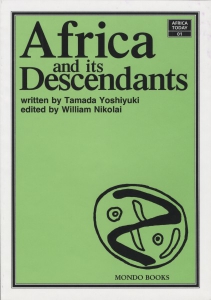 (1刷)
(1刷)
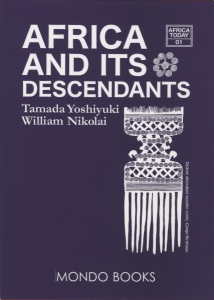
(2刷)
SLAVE TRADE 奴隷貿易
By the early 1500’s, black people were going to the New World. The first blacks went to America as explorers, not as slaves.
1500年代の初め頃までには、黒人は「新世界」に行くようになっていました。最初の黒人は、奴隷としてではなく探検家としてアメリカに行きました。
In 1619 twenty Africans were unloaded in Jamestown, Virginia. That was the year when the roots of slavery began in the United States. Slave ships filled with captured black men and women began to sail across the Atlantic Ocean to the American shores.
1619年に20人のアフリカ人がバージニアのジェイムズタウンに積み荷として陸揚げされました。それが合衆国の奴隷制度の元が始まった年でした。捕われの身となった黒人男女で一杯の奴隷船が大西洋を横断してアメリカの岸へと航海を始めました。
In the slave trade the merchants’ profits and the products from America were exchanged in Europe for guns and cloth which were brought to Africa and exchanged for slaves. These humans were sold in America where they produced the goods to be brought to Europe. This was the so-called 'triangle trade’ or 'triangular trade.’ The riches of capitalists grew while Africa suffered. This slave trade continued for three and a half centuries and brought millions of Africans to America.
奴隷貿易では、商人の利益とアメリカでの産物がヨーロッパで銃や布と交換され、それがアフリカに持って行かれて奴隷と交換されました。その人たちはアメリカで売り飛ばされ、そこで産物を作って、その産物がヨーロッパに運ばれました。これは「三角貿易」または「三角の貿易」と呼ばれました。資本家の富は増え、アフリカは苦しみました。この奴隷貿易は3世紀半の間続いて、数百万人ものアフリカ人がアメリカに運ばれました。
European, above all English and American capitalists had gained enormous profits from the trade in slaves and the work performed by the slaves. Slavery was an essential part of the international capitalist market. By this trade the first large-scale collection of wealth was accumulated, speeding up development towards capitalism. The 'triangular trade’ was one of the foundations of the Industrial Revolution in Europe.
ヨーロッパ人、とりわけイギリスやアメリカの資本家が奴隷貿易と奴隷がした労働から莫大な利益を得ました。奴隷制は国際資本家市場の要の部分でした。この貿易によって大規模な初期の資本蓄積がなされて、速度を上げながら資本主義に向けて進んで行きました。「三角貿易」は、ヨーロッパの産業革命の土台の一つになりました。
For Africa the consequences of the slave trade were ruinous, not only in terms of the boundless suffering of the millions who were taken as slaves, and their descendants, but also for those left behind. In the Middle Passage sometimes whole groups of Africans, taken on deck at night for air, would leap into the sea – committing mass suicide rather than go into slavery.
アフリカにとっては、奴隷貿易のもたらす結果は、奴隷として連れ出された何百人もの人々とその子孫が被った際限ない苦しみという意味だけではなく、後に残された人たちにとってという意味でも壊滅的でした。中間航路では、外気にあてるためにデッキに連れて出されたアフリカ人たちが集団で海へ飛び込むこともありました。奴隷にならずに集団自殺をしたのです。
SLAVERY 奴隷制度
As soon as they were landed and sold some would run away into the forest and join the indigenous people who were already living there. Thousands of Africans were brought by force to America to plant cotton, rice, corn, and wheat, to build the roads and clear the forests, to do all the hard work that went into the early building of America.
アフリカ人の中には陸揚げされて売られるとすぐに森に逃げ込み、元からそこに住んでいた現地の人たちと合流するものもいました。何千人ものアフリカ人が力ずくでアメリカに連れて来られ、綿、米、玉蜀黍(とうもろこし)、小麦を栽培し、道路を建設したり、森林を伐採するなど、初期のアメリカの土台を作ったあらゆる過酷な労働を強いられました。
Each slave was sold off to a separate plantation, for plantation owners wanted to keep them from communicating with each other through the same African language. In addition, they tried to prevent the slaves from learning to read and write English, too. When the owners found some slaves trying to read and write, they often punished them severely.
奴隷はそれぞれ別々の農場に売られました。奴隷同士が互いに同じアフリカの言葉で意思の疎通がはかれないようにしたいと荘園主が望んでいたからです。それに、奴隷が英語の読み書きを習おうとするのも邪魔しようとしたのです。荘園主が読んだり書いたりしようとする奴隷を見つけると、厳しく罰することもよくありました。
No man wanted to be a slave. Many tried to escape from slavery. Thousands ran away alone. Some slaves rebelled against their slave masters.
誰も奴隷になりたくありませんでした。多くの人々が奴隷制度から逃れようとしました。何千のも奴隷が一人で逃亡しました。奴隷主に反乱を起こした人たちもいました。
In 1800, a young black, Gabriel, organized a revolt in Virginia that involved thousands of black men and women. But on the day when the uprising was to have started, a great storm and a flood wrecked their plans. The leaders were discovered, and some thirty-five others were put to death by the slave owners. They died silently.
1800ガブリエルという若い黒人がヴァージニアで数千人に及ぶ黒人男女が関わった反乱を起こしました。しかし、その反乱が始まる予定だった日に激しい雨が降って洪水となり、計画が頓挫してしまいました。首謀者は見つけ出され、およそ35人もの人たちも奴隷主に殺されました。その人たちは黙って死んで行きました。
In 1831 another great slave rebellion broke out in Virginia, led by Nat Turner. In this insurrection, some sixty slave owners were killed. More than a hundred blacks lost their lives before this uprising was suppressed. Seventeen slaves were put to trial and hanged. As slaves became increasingly restless, they revolted more and more. In increasing numbers, too, they were escaping to the North.
また1831年には、ヴァージニアでナット・ターナーに率いられて大規模な奴隷の反乱が起きました。この暴動では60人ほどの奴隷主が殺されました。そして暴動が鎮圧されるまでに100以上もの黒人が命を亡くしました。17の奴隷が裁判にかけられて、絞首刑にされました。奴隷の不満が募れば募るほど、ますます反乱を起こしました。北部へ逃亡する奴隷の数も増えていきました。
